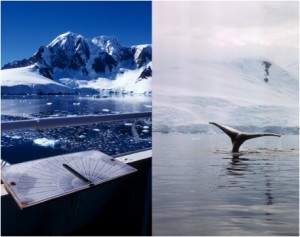During a seemingly ordinary fall day with dolphins, I captured killer whales attacking and eating a dolphin on film. It inspired me to devote a chapter of my PhD to killer whale predation on dolphins and the incredibly dynamic interaction unfolding between an intelligent, efficient predator and its similarly intelligent prey. I’m hooked. There is so much to learn about this process. Our colleagues have written very cool papers describing how mammal-eating killer whales attack and kill their prey: here’s one and here’s another. And someone has just posted another cool video of dolphins and killer whales off Hyacinthe Island. We’ve been trying to track down whoever shot that video so we can compare notes. If you know who they are, could you please put us in touch? Thanks!
The Pacific white-sided dolphins we study are engaged in a daily struggle between finding food and avoiding being eaten. Some days are better than others. If you look in any field guide to marine mammals, you’ll find that Pacific white-sided dolphins are supposed to be an offshore, open-ocean species. We think these dolphins are here, in the inshore waters of British Columbia off northeastern Vancouver Island, in part to take advantage of fairly reliable food sources like herring and other small, schooling fish. We also think that chasing fish in these parts carries a serious risk. Death. This area is known for reliably seeing resident, salmon-eating killer whales, but the inlets that the dolphins use are also prime hunting spots for mammal-eating, transient or Bigg’s killer whales.
A lot of the work we do is to understand the choices that these dolphins make between finding food and avoiding predators. While dolphins may not avoid predation altogether, they might have some behaviors up their sleeves that allow them to survive in habitat where predators could be around every corner. Maybe they cut their foraging a bit short here and there, or keep quiet to elude detection by the killer whales highly-evolved sensory systems. But smart as dolphins are, they’re not going to 100% effective at avoiding predators. And hey: killer whales (OK, you know that killer whales are the biggest member of the dolphin family, right?) have to eat, too.



